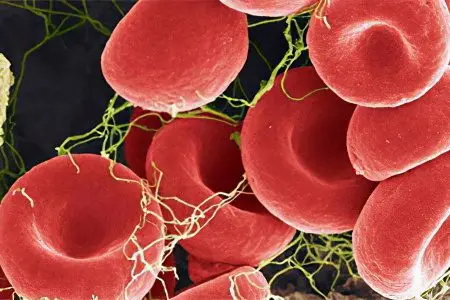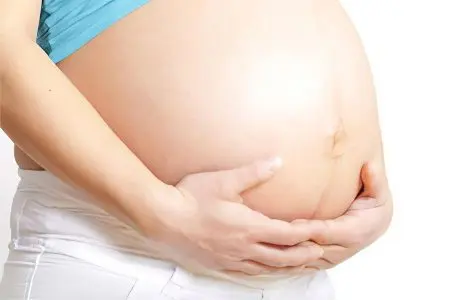Contents
If left untreated, anemia can lead to serious complications. Anemia is a common condition that many people don’t take seriously. In fact, it is precisely this attitude towards anemia that often causes the development of complications, which in some cases end in death. Therefore, it is so important to be able to recognize the symptoms of a disorder and consult a doctor in order to receive timely treatment.
What is the danger of anemia?

In human blood, blood cells, which are represented by erythrocytes, platelets and leukocytes, move freely. Each group of elements performs a specific function. With anemia, red blood cells suffer, in which the hemoglobin content decreases. This component not only stains the blood in its characteristic color, but is also responsible for gas exchange in the body. Hemoglobin carries oxygen molecules to organs and tissues, and takes carbon dioxide from them. If the hemoglobin level decreases, then the person develops anemia. Hemoglobin consists of iron and a protein component. If the iron content in the body decreases, this leads to a drop in hemoglobin levels. Also, with anemia, a decrease in the number of red blood cells themselves is possible, which leads to serious consequences for the body.
Anemia is most often diagnosed in women. In men, this disorder is much less common. Although in general, anemia is a very common pathological condition. As statistical analysis shows, one or another degree of anemia is observed in every 4 inhabitants of the planet. Pregnant women are at particular risk.
What are the consequences of anemia for the body?

The health consequences of anemia can be not only serious, but irreversible if left untreated. A low level of hemoglobin affects the functioning of the human immune system, which will not be able to protect it from various diseases. People with anemia are more susceptible to a variety of infections.
To make up for the lack of oxygen and not to deprive the organs and tissues of nutrition, the body launches adaptive mechanisms. They come down to increasing the load on the heart and blood vessels. The heart muscle performs more contractions, driving impressive volumes of blood through itself. Therefore, ignoring the symptoms of anemia can lead to the development of heart failure.
The body becomes weak, the person gets tired faster, cannot fully fulfill their duties. Unmotivated irritability appears, the psycho-emotional sphere suffers. Moreover, thought processes worsen, attention and memory weaken.
Taste and smell are also distorted. Anemia negatively affects the appearance of a person. The skin becomes dry, ulcers and cracks appear on the mucous membranes, nails exfoliate, and hair falls out.
Possible complications of anemia include:
Frequent diseases that develop against the background of a fall in immunity.
Diseases of the cardiovascular system against the background of increased stress on the heart muscle.
Pregnant women are more likely to have preterm labor and have an increased risk of miscarriage. The fetus lacks nutrients and begins to lag behind in development.
If anemia manifests itself in childhood, then for the child’s body it is dangerous by growth retardation and mental development.
The organs of the digestive system are exposed to various diseases, vision deteriorates, problems with the respiratory system may appear.
If a patient develops a hypoxic coma, then this increases the likelihood of his death.
Anemia 3 degrees: possible consequences for the body
Anemia has 3 degrees of severity. The last and most dangerous to health is anemia of the 3rd degree. In this case, the hemoglobin level drops below 70 g / l, although normally this figure should remain at around 120-180 g / l. With anemia of the third degree of severity, serious disturbances occur in the work of all internal organs.
The most dangerous consequences of this condition are:
Development of cardiogenic shock.
Development of acute renal failure.
Development of massive bleeding.
The development of heart failure with further heart attack, stroke and other severe disorders.
The probability of death with anemia of the 3rd degree is very high. In order to prevent the progression of the disease, it is necessary to seek medical help already at its first symptoms. It is impossible to self-diagnose anemia.
Anemia in women: what is the danger?

For the female body, anemia can be dangerous with the following complications:
The mucous membranes of the organs of the digestive system become covered with ulcers, which leads to malfunctions in their work.
The kidneys and liver are not able to perform their functions in full.
The central nervous system and the cardiovascular system suffer.
The genitourinary system is attacked by various infectious agents, which impairs female reproductive function.
Hair becomes dull, falls out quickly, the shape of the nail plate changes.
Ulcers often form in the mouth, and the tongue may become inflamed. Women with anemia are more likely to develop cavities.
The skin is attacked by harmful microorganisms, which affects its condition.
Causes of anemia

Experts identify three main causes of anemia: bleeding, hemolysis, and insufficient production of blood cells in the body. In addition, there are other factors that can lead to anemia:
Genetic anomalies:
Congenital disorders of the production of red blood cells.
Wrong structure of erythrocytes.
Spherocytosis.
Bassen-Kornzweig syndrome.
enzymatic anomalies.
Nutrition errors:
Adherence to strict diets.
Deficiency in meals of B vitamins, vitamin C, iron and other elements.
Chronic diseases:
Damage to the urinary system.
Diseases of the heart and blood vessels.
Autoimmune pathologies.
Tumors: benign and malignant.
Infectious diseases:
Viral hepatitis.
Malaria.
Cytomegalovirus infection.
Toxoplasmosis.
Bronchitis with obstruction.
Tuberculosis.
In addition, various poisons that have entered the body, as well as taking certain medications, can provoke anemia. Additional risk factors are injuries: burns, fractures and frostbite.
Symptoms of anemia

Regardless of a person’s gender and age, anemia will manifest itself with the following symptoms:
Pale skin and mucous membranes. As the anemia progresses, the pallor will increase.
Increased fatigue and weakness.
The occurrence of shortness of breath with moderate physical exertion. In the future, she will disturb even at rest.
Feeling of stiffness in the legs, cramps may appear periodically in them.
Nails exfoliate, hair begins to fall out strongly.
Jams appear in the corners of the mouth.
Arms and legs may tremble, and muscle weakness increases.
Taste and smell are distorted.
There are pains in the abdomen.
The skin becomes dry, cracks appear on it.
In women, the duration of menstrual bleeding may be disturbed.
If a person is in old age or in adulthood, then his anemia will be expressed by the following symptoms:
Frequent dizziness, fainting.
The appearance of noise in the ears, headaches.
Trouble sleeping.
Familiar foods can cause a feeling of disgust.
Decreased appetite leads to severe weight loss.
Perhaps the development of senile dementia.
Increased risk of angina pectoris.
In men, potency suffers greatly.
If a woman has not yet entered the period of menopause, then it can begin much earlier precisely against the background of anemia.
In childhood, symptoms of anemia may include:
The child begins to lag behind in school, his attention and memory are reduced.
Lethargy increases, he ceases to take an active part in the games.
There may be a delay in physical development.
Appearance suffers.
Features of the course of anemia in infants and adolescents
Sometimes anemia develops in newborn children. A prerequisite for this is anemia in the mother. This violation is detected immediately after the birth of the baby. If measures are not taken in time, then anemia will progress, acquiring a severe course. As the child gets older, they may show interest in unusual foods, such as chewing on paper, chewing on chalk, or eating earth.
In adolescence, the load on the heart and blood vessels increases. The heartbeat becomes more frequent, jumps in blood pressure are observed, shortness of breath may appear. Jaundice may develop. Children with anemia are more susceptible to various infectious diseases.
Features of the course of anemia during pregnancy

The body of a pregnant woman needs enhanced nutrition. After all, vitamins and minerals are consumed during this period in large volumes, since they go to the life support of both the expectant mother and the child. Therefore, it is often pregnant women who suffer from iron deficiency anemia.
If anemia in a pregnant woman is at an early stage of its development, then to correct it, it will be enough to change the diet. Mild anemia does not affect the health of the child, but the woman’s body will suffer.
With advanced forms of the disease, medicines are needed. Otherwise, the risk of developing fetal pathologies increases.
Moreover, the pregnancy itself will proceed with complications, including:
Varicose veins of the lower extremities, increased formation of blood clots.
The risk of bleeding and miscarriage increases.
The fetus suffers from anemia, which affects its growth, physical and mental development.
Since anemia is a disease that is widespread, it is necessary to periodically donate blood for analysis. Even if pathological symptoms are completely absent. This will allow you to detect this violation in time and take the necessary measures to eliminate it.









